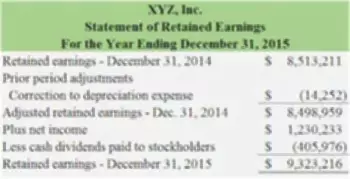Content

Therefore it is beneficial in ensuring that there is a faster movement of inventory to enhance cash flows and minimize storage costs. If inventory stays on the shelves longer then it means cash is tied and it is unavailable for the company’s other operation this costing it more money. Some companies may actively choose to keep higher levels of inventory – for example, if a significant increase in customer demand is expected. Another consideration is that some types of business will see seasonal fluctuations in demand for products, meaning that DIO may vary at different times of the year. As soon as the fruit is harvested and brought to be sold, it sells in less than two days. Since this is a great efficiency measure, there is no action to be taken. If DSI were much higher and unsustainable, such as 15 days, then action would need to be taken.
- By streamlining communication, ordering, and fulfillment up and down the supply chain, BlueCart makes it easy to understand and improve inventory control.
- The ideal DSI for retailers and online sellers alike will vary depending on the retail business category they’re operating in.
- This helps prevent stock from accumulating or going obsolete, which in turn lowers DSI.
- Dividing the average inventory of $1.19 billion by the total cost of goods sold of $5.42 billion and multiplying by 365, AMDs’ DSI equals 80.23 days.
- DSI has different meanings, but it’s most commonly interpreted asa financial metric that indicates the average time that a business takes to sell its inventory.
- Understand what is DSI, learn its importance for businesses and investors, and see how to calculate days sales in inventory through the use of examples.
A low DSI suggests that a firm is able to efficiently convert its inventories into sales. This is considered to be beneficial to a company’s margins and bottom line, and so a lower DSI is preferred to a higher one. A very low DSI, however, can indicate that a company does not have enough days sales in inventory inventory stock to meet demand, which could be viewed as suboptimal. The Cost Of Goods SoldThe Cost of Goods Sold is the cumulative total of direct costs incurred for the goods or services sold, including direct expenses like raw material, direct labour cost and other direct costs.
What Is Days Sales of Inventory (DSI)?
Days sales in inventory is also one of the measures used to determine the cash conversion cycle, which is the company’s average days to convert resources into cash flows. DSI is also known as the average age of inventory, days inventory outstanding , days in inventory , days sales in inventory, or days inventory and is interpreted in multiple ways. Indicating the liquidity of the inventory, the figure represents how many days a company’s current stock of inventory will last. Generally, a lower DSI is preferred as it indicates a shorter duration to clear off the inventory, though the average DSI varies from one industry to another.
The DSI is a financial ratio, and it can be interpreted as the number of days that the current stock of inventory will last for the company. Typically, a low DSI is preferable as it indicates a quick turnover of inventory, but the preferable DSI will vary based on the company and https://www.bookstime.com/ its industry. Days’ sales in inventory indicates the average time required for a company to convert its inventory into sales. However, a large number may also mean that management has decided to maintain high inventory levels in order to achieve high order fulfillment rates.
What is the days’ sales in inventory ratio?
In some cases, the most accurate way to estimate the actual number of days of sales in inventory is to only include finished goods, as those are the ones actually available for sale. Including inventory in early stages of the production process may also distort the calculation as that inventory will not be immediately available to be sold.
It may lead to a surge in demand for water purifiers after a certain period, which may benefit the companies if they hold onto inventories. DSI is a metric that analysts use to determine the efficiency of sales. Adam Hayes, Ph.D., CFA, is a financial writer with 15+ years Wall Street experience as a derivatives trader. Besides his extensive derivative trading expertise, Adam is an expert in economics and behavioral finance. Adam received his master’s in economics from The New School for Social Research and his Ph.D. from the University of Wisconsin-Madison in sociology. He is a CFA charterholder as well as holding FINRA Series 7, 55 & 63 licenses.
Essential Stock Market Metrics
This amount is usually decided based on the company’s specific needs and operations. To illustrate the days’ sales in inventory, let’s assume that in the previous year a company had an inventory turnover ratio of 9. Using 360 as the number of days in the year, the company’s days’ sales in inventory was 40 days . Since sales and inventory levels usually fluctuate during a year, the 40 days is an average from a previous time. Find Out The Inventory Turnover RatioInventory Turnover Ratio measures how fast the company replaces a current batch of inventories and transforms them into sales.
Is higher inventory turnover better?
What Is the Best Inventory Turnover Ratio? In general, the higher the ratio number the better as it most often indicates strong sales. A lower ratio can point to weak sales and/or decreasing market demand for the goods.
